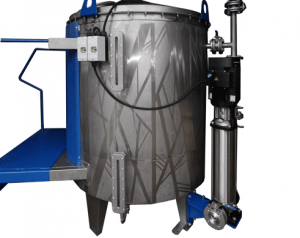Universalization of equipment is one of the most important and urgent tasks. It means: a single device performing various operations. The benefits of it are obvious: with the right approach, you can significantly reduce costs while maintaining the required quality of the products.
Dispersers and homogenizers are widely used in the food industry, pharmaceuticals, chemical industry, road construction, etc. They cover each other’s functions: a disperser grinds the particles of the substances, and a homogenizer makes the product homogeneous. Very often in literature these terms are used as synonyms, although in reality these devices are different. Although it can be said that a homogenizer is a disperser. There are devices that successfully combine the functions of homogenization and dispersion – they are colloid mills.
Colloidal grinding result in particle size that are equal to fractions of the micrometer. Almost always a colloidal grinding is wet. Depending on the kind of the crushed material, the ratio of solid and liquid phases can vary from 1: 2 to 1: 6. One of the main requirements for a dispersive medium is that it should not dissolve a dispersed phase.
The company GlobeCore produces colloidal mills of the KLM type, which obtain highly stable solutions, ultrathin suspensions, mixtures and emulsions. Thus, a colloid mill KLM can be successfully used in production that needs a combination of both a dispersant and the homogenizer.
The factors that affect the raw materials in KLM are:
- complex geometric reliefs of rotor surface increases turbulence that shears the product particles;
- centrifugal forces;
- high relative speed between a rotating rotor and a stationary stator;
- grinding;
- cavitation.
GlobeCore colloid mills can be successfully integrated into existing technological lines, increasing their efficiency. The quality grinding, is achieved through optimal ratio of the dispersed and dispersive phases.


 GlobeCore food homogenizers increase the uniformity of honey by creating small and uniform crystals of the substance.
GlobeCore food homogenizers increase the uniformity of honey by creating small and uniform crystals of the substance.